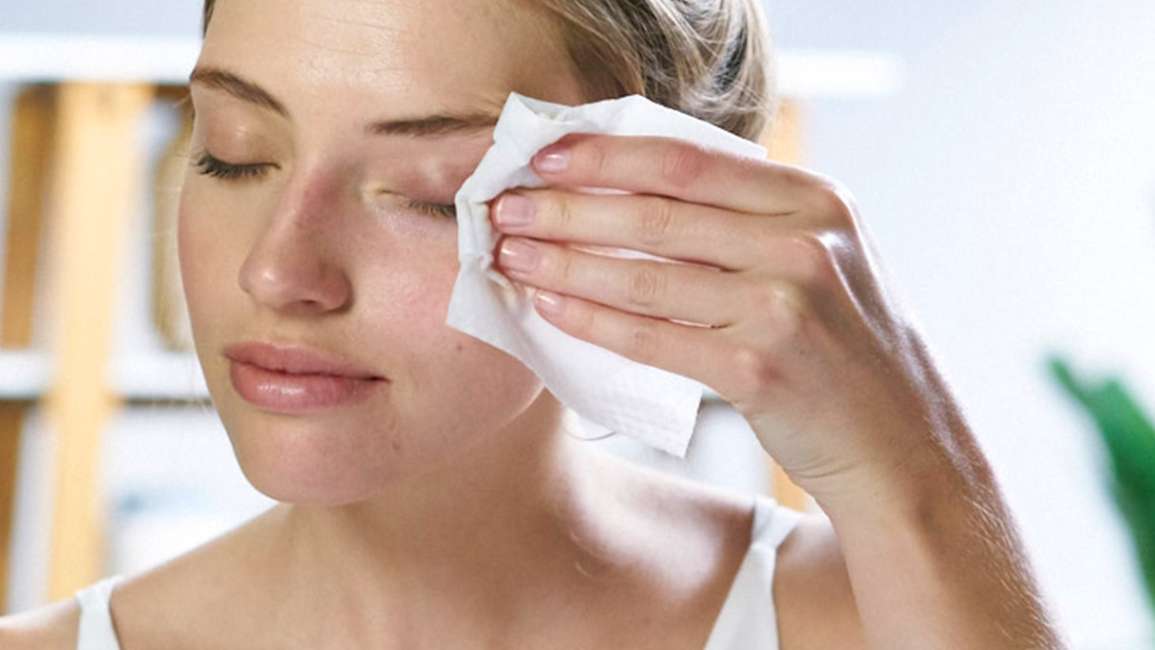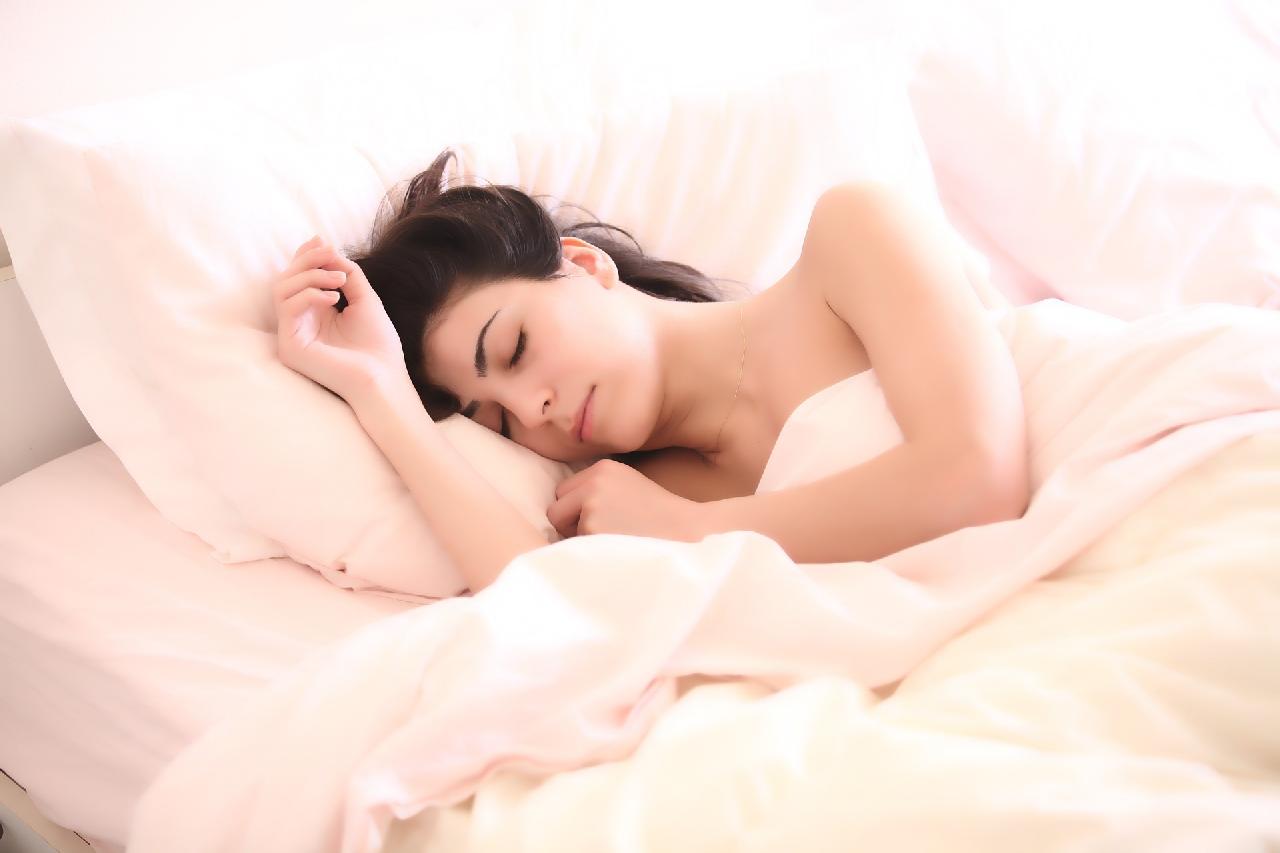
The problem with makeup wipes and what to use instead

If you’re in the habit of using makeup wipes to cleanse before bed, it’s probably time to change your wicked ways. Makeup wipes are a scourge, for both your skin and the environment. There are much better ways to wipe the day away.
The downside of cleansing wipes, from your skin’s point of view
Convenience is the benefit that drives people to use makeup cleansing wipes. They’re just so darn handy for those times when you literally have no energy left for double-cleansing or no easy access to running water. Cleansing wipe advocates talk about how they’re great after parties and when you’re trying to repair your makeup in planes, trains and automobiles. But all that convenience comes at a cost to your skin.
Very few makeup wipes contain ingredients that can properly dissolve the face oils, makeup and pollutants that end up on your face during the day. This means you’re rubbing a slurry of bacteria and gunge all over your facial skin and deeply into your pores. Then you head for bed and it gets deposited on your pillow slip, where it accumulates sleep after sleep.
To quote Yale dermatologist Mona Gohara: “Yes, makeup wipes are better than nothing, but they’re basically the equivalent of swirling dirty toilet water around your bathroom, so it’s up to you if you really want that.”
Another problem with wipes is the pressure you apply when you’re using them, especially around your sensitive eye area. All that rubbing is irritating, which sets the scene for accelerated ageing and hyperpigmentation.
If you’re still not convinced that wipes have no place in your beauty routine, consider the chemicals they contain. Typically, the formula used to keep wipes damp is made with phthalates (for fragrance), triclosan (for hygiene) and parabens (for shelf life).
- - Phthalates: Fragrances used in wipes nearly always contain phthalates, a group of chemicals that help scents to last longer. They show up as DEP, BBzP, DBP and DEHP on ingredients lists and have been linked to asthma, obesity, ADHD, type 2 diabetes, reduced sperm count, breast cancer, reproductive malformation, infertility, low IQ, neurodevelopmental issues, behavioural issues, autism spectrum disorders, altered reproductive development and male fertility issues.
- - Parabens: If you see methylparaben, ethylparaben, propylparaben or butylparaben in the ingredients list, the wipes contain parabens. They are known to disrupt hormone function by mimicking how oestrogen works.
- - Triclosan: First used in hospital cleaners as an antimicrobial agent, triclosan is another hormone disruptor.
Skin problems associated with using wipes
If somebody paid you a handsome sum to use only makeup wipes for cleansing for a few weeks, you’d be richer but you wouldn’t look like a million dollars. Not at all. Here are the skin problems that wipes can cause:
- - Breakouts, i.e. spots, acne, whiteheads…the teen angst kit.
- - Blackheads, because wipes mostly just distribute grime evenly over your face, rather than actually removing it.
- - Skin irritations caused by chemicals in the wipes and too much hard rubbing.
- - Eye irritations and infections caused by not properly removing eye makeup.
The downside of cleansing wipes, from the planet’s point of view
Makeup wipes aren’t made out of paper. They’re usually manufactured from non-biodegradable plastic fibres, so they can only be disposed of in landfills. They cause real problems if they’re flushed down the loo, even if they are described as ‘flushable’, because they contribute to horrendous ‘fatbergs’ that cause sewer blockages. When fatbergs cause sewerage spills, makeup and baby wipes can end up floating around our beaches. Gross.
Another environmental problem with wipes is the chemicals they contain. The phthalates, triclosan, parabens and other nasties used to make wipes enter water systems and landfills, adding to environmental damage.
How to conduct a no-wash cleanse that works
When you’re in a situation that doesn’t allow you to do your usual Okana double-cleansing ritual, there are several approaches you can take.
- - Carry a travel-size container of your favourite oil-based cleanser with you. Pin your hair back and dab the cleanser on your cheeks, chin and forehead. Massage in with the pads of your fingers, then remove with ordinary paper tissues. If you have plenty of time, do it again, just to be sure your skin is properly clean.
- - Carry a clean, damp washcloth with you in a plastic pouch or zip-lock bag. Use it to remove your oil-based cleanser, which should be applied as described above.
- - Buy a set of reusable cotton or bamboo pads. You can use them dry or damp to remove cleanser, then take them home for a hot hand wash with soap.
- - You can also get microfiber makeup remover pads that are machine washable.
Read another article about how to choose the best natural face cleanser for your skin type




Leave a comment
This site is protected by hCaptcha and the hCaptcha Privacy Policy and Terms of Service apply.